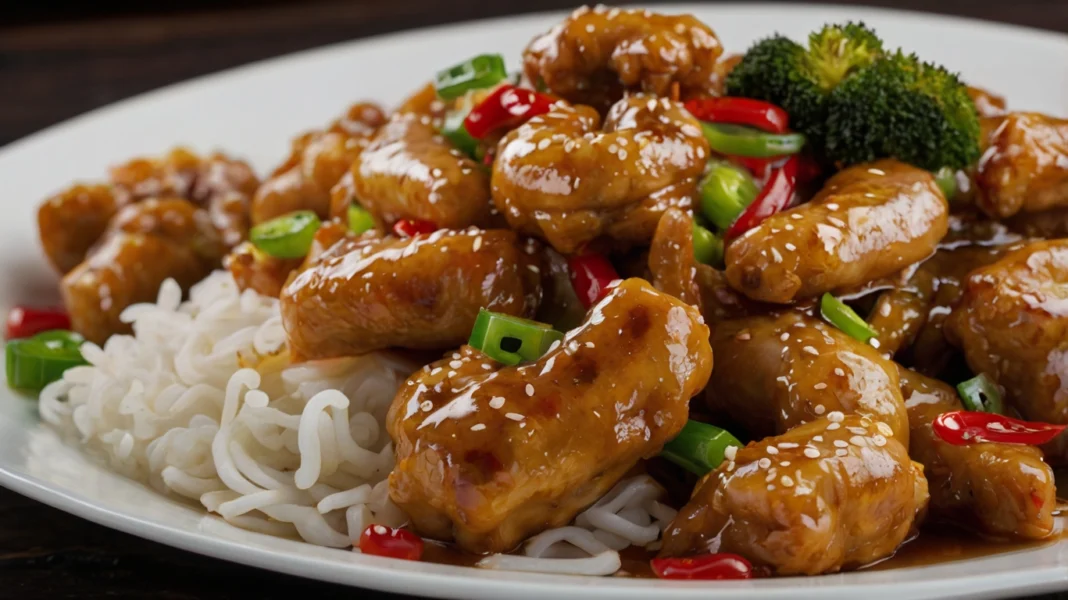Chinese food is one of the most beloved and flavorful cuisines worldwide, offering a blend of complex tastes, textures, and aromas. From the depth of its history to the diversity of its flavors, there’s so much to discover and appreciate. This guide dives into the roots of Chinese cuisine, its popular regional varieties, famous dishes, and even how you can try cooking it yourself!
The Origins of Chinese Food
Ancient Roots of Chinese Cuisine
Chinese cuisine dates back over 5,000 years, with food playing an essential role in Chinese culture and philosophy. The earliest recipes were based on the principles of balancing flavors and maintaining harmony with nature—a concept that remains integral to Chinese cooking today.
Influences Over the Centuries
With each dynasty, Chinese cuisine evolved, drawing influences from regions, climate, and new ingredients introduced through trade, such as spices from the Silk Road. This led to a cuisine that embraces variety while valuing harmony, balance, and presentation.
Understanding Chinese Food Culture
The Role of Food in Chinese Society
Food in China isn’t just a necessity; it’s a central part of social interactions, family gatherings, and even business meetings. Meals are traditionally communal, meant to be shared, which reflects the emphasis on unity and community.
Celebrations and Festivals with Special Foods
Special events in China are celebrated with unique foods. For instance, the Chinese New Year often includes dishes like dumplings (symbolizing wealth) and fish (symbolizing prosperity). Each dish has a meaning, making food an integral part of Chinese cultural celebrations.
Regional Cuisines in China
China’s vast geography has given rise to distinctive cooking styles in different regions, each offering unique flavors and dishes.
The Eight Great Regional Cuisines
- Cantonese Cuisine
Known for its delicate flavors and emphasis on freshness, Cantonese cuisine is famous for dim sum, roasted meats, and soups. - Sichuan Cuisine
Renowned for its bold, spicy flavors, Sichuan cuisine uses ingredients like chili peppers and Sichuan peppercorns, giving dishes a tingling, numbing sensation. - Hunan Cuisine
Similar to Sichuan but even spicier, Hunan cuisine is known for its intense flavors, fragrant spices, and focus on hot and sour dishes. - Shandong Cuisine
With a focus on seafood and crispy textures, Shandong cuisine often features flavors of salt, garlic, and onions. - Jiangsu Cuisine
Known for its refined techniques and light, slightly sweet flavors, Jiangsu cuisine often features fresh fish and seafood. - Zhejiang Cuisine
Fresh and mellow, Zhejiang cuisine highlights seafood and bamboo shoots, known for its subtler flavors. - Anhui Cuisine
With an emphasis on wild herbs and vegetables, Anhui cuisine is earthy and flavorful, reflecting the mountainous region. - Fujian Cuisine
Light yet flavorful, Fujian cuisine makes use of soups, seafood, and ingredients from the coast.
Popular Chinese Ingredients and Cooking Techniques
Staple Ingredients in Chinese Cooking
Essential ingredients like soy sauce, rice vinegar, ginger, garlic, and scallions give Chinese dishes their signature flavors. Vegetables such as bok choy, mushrooms, and lotus root are also widely used, along with rice and noodles as staple foods.
Traditional Cooking Methods
Chinese cuisine incorporates several traditional techniques, such as stir-frying, steaming, braising, and deep-frying. Wok cooking, for instance, is a fast and high-heat technique that preserves nutrients and creates unique textures.
Top Chinese Dishes to Try
Chinese cuisine offers a wide array of dishes to suit every palate. Here are a few iconic choices:
- Dumplings (Jiaozi)
These delightful pockets filled with meat and vegetables are a staple for special occasions and are often enjoyed during Chinese New Year. - Peking Duck
Known for its crispy skin and tender meat, Peking Duck is a famous Beijing specialty served with pancakes, cucumber, and hoisin sauce. - Sweet and Sour Pork
This dish features a perfect balance of tangy and sweet flavors, with bite-sized pork pieces coated in a vibrant sauce. - Hot Pot
Popular in winter, hot pot is a communal dish where diners cook ingredients in a shared pot of simmering broth. - Kung Pao Chicken
A well-known Sichuan dish, Kung Pao Chicken combines chicken, peanuts, vegetables, and chilies for a spicy, slightly sweet flavor.
Chinese Street Food Culture
Street food is an essential part of Chinese cuisine, with bustling night markets offering treats like Jianbing (savory crepes), stinky tofu, and skewers of grilled meat. Each region has unique street foods, providing an authentic taste of local culture and flavors.
Health Benefits of Chinese Cuisine
Chinese cuisine often incorporates a balance of proteins, vegetables, and grains. With its focus on fresh ingredients, steaming, and stir-frying, it’s rich in nutrients and generally low in fat. Traditional Chinese medicine also views food as a way to balance the body’s energy, promoting health and wellness.
With Chinese communities spread worldwide, the cuisine has evolved to adapt to local tastes. Dishes like General Tso’s chicken and fortune cookies, for example, have become popular in the West, though they aren’t traditionally Chinese. This globalization has made Chinese flavors accessible to nearly everyone.
Tips for Cooking Chinese Food at Home
Essential Chinese Pantry Ingredients
To get started with Chinese cooking, stock up on essentials like soy sauce, sesame oil, rice vinegar, and Sichuan peppercorns. Fresh ingredients like ginger, garlic, and green onions are also key to achieving authentic flavors.
Basic Cooking Tips and Techniques
Mastering a few techniques, such as stir-frying in a wok and learning how to balance flavors, can help you recreate Chinese dishes at home. Experimenting with sauces and seasoning will make your meals feel more authentic and satisfying.
Conclusion
Chinese food is a treasure trove of flavors, textures, and history. Its complexity and balance make it one of the most cherished cuisines worldwide. Whether you’re savoring dumplings in Beijing, sampling hot pot in Sichuan, or trying your hand at stir-frying at home, Chinese cuisine offers an endless journey of discovery.
Also Read This Article Type Soul Codes




